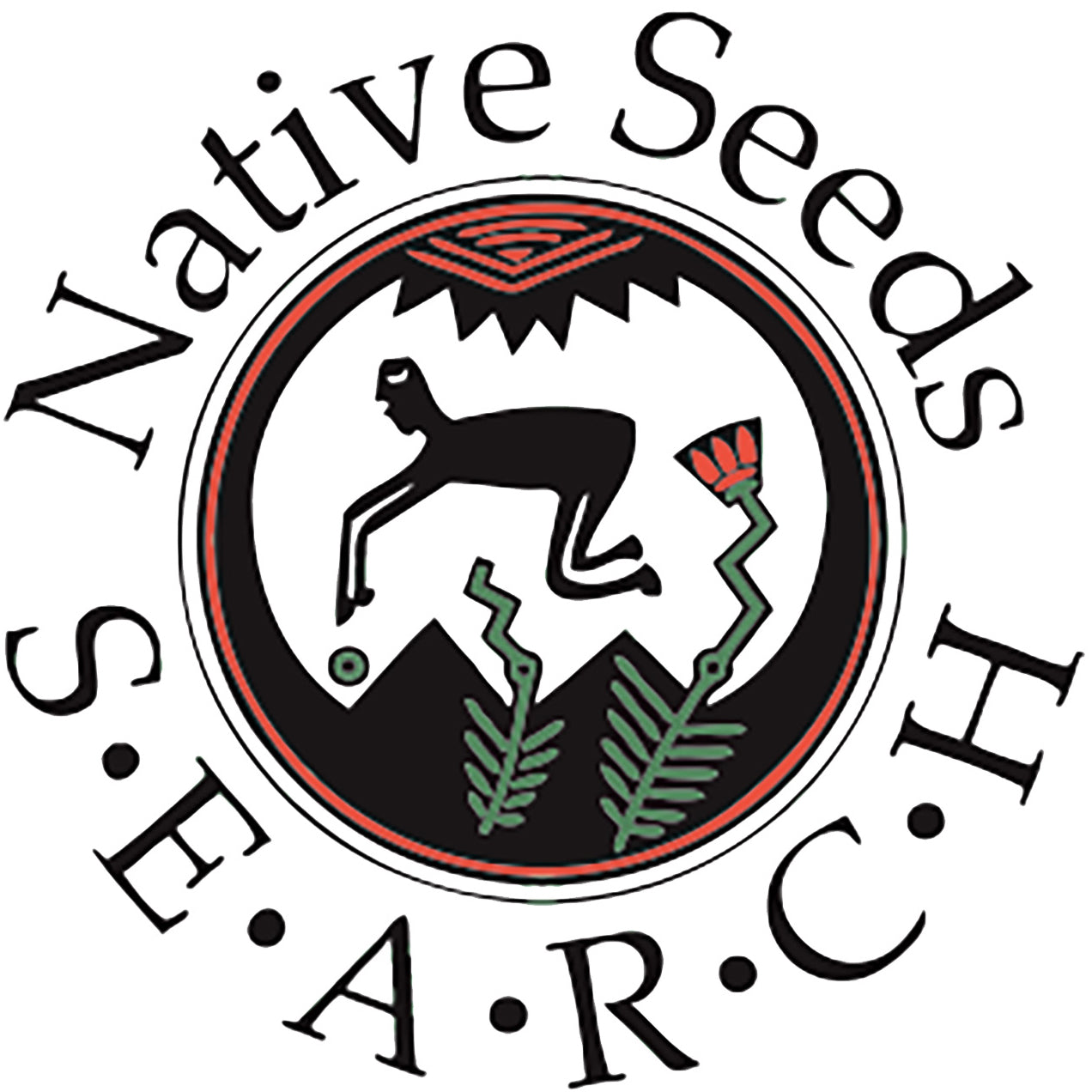
BOTANICAL NAME:
Zea mays
LOCAL NAVAJO NAME:
Naadaa’
COLLECTION SITE:
Moenave, Coconino County, Arizona
COLLECTION DATE:
1984
HISTORICAL ORIGINS:
Corn was domesticated in Mesoamerica beginning about 9,000 years ago. It spread throughout the Americas, arriving in the Southwest by 2100 BC.
CULINARY USES:
In common with many other Southwestern indigenous groups, corn is seen as the primary food for the Navajo (also known as the Diné). It is considered the mother, enabler, transformer and healer. Navajo Robin’s Egg is a soft grinding flour corn, so it is dried, roasted and ground into meal for tamales and cornmeal soup.
NUTRITIONAL BENEFITS:
Corn meal is considered a whole grain that does not contain gluten. It is high in fiber, iron and phosphorus.
MEDICINAL USES:
Corn pollen is a crucial element in Navajo healing rituals, and is often carried by elder generations in a pouch worn around the neck for ceremonial use. To bless oneself or others, pollen may be thrown over the shoulder, sprinkled on the head, or eaten.
SOCIO-CULTURAL IMPORTANCE:
Corn is a very sacred plant to the Navajo along with beans, squash, and tobacco. The Navajo creation story says they were created from an ear of corn and the skin of Changing Woman, their most important deity.
Navajo farmers have always been aware of the importance of seed saving, and have developed ceremonies to mark this. Traditionally, before harvesting a field of corn, four corn stalks, each with four ears, were chosen and laid with their tips facing the four cardinal directions. Two more stalks were laid out diagonally across these, to represent the zenith and nadir. The harvest then took place with all the corn being laid on top of these stalks. The corn was dehusked from the top, with the best looking ears being reserved for next year’s plantings. When the original six stalks were reached, they were dehusked and mixed into the next year’s seed stock to ensure a successful harvest. A seed blessing ceremony was then sometimes carried out for the seed stock, involving the use of special stones, pigments, or plant concoctions to imbue the seeds with drought-resistance and strength.
CULTIVATION TECHNIQUES:
Corn has been grown by many generations of Navajo people. Traditional agricultural knowledge is infused with references to figures such as Home God, or Haashch’eehoghan. Corn has historically been planted with the arrival of the monsoons, as one of Home God’s 30 songs demonstrates:
The corn grows up.
The waters of the dark clouds drop, drop.
The rain comes down.
The waters from the corn leaves drop, drop.
The rain comes down.
The waters from the plants drop, drop.
The corn grows up.
The waters of the dark mists drop, drop.
(Bingham & Bingham 1979: 6)
Moenave also has natural springs, which have been diverted to provide irrigation for fields. Navajo Robin’s Egg responds better to dryer soils, so it would do well with monsoon-dry farming techniques. Traditionally, corn seeds were planted deep in the ground, around 6-7 inches deep, where soil moisture is retained. A sacred digging stick, known as a gish, has historically been used by Navajo farmers to sow seeds, although tractors are also commonly employed. In the past, communities worked together to plant fields of corn, sharing in the harvest during the autumn. Planting either occurred from the center of the field spiraling out, a technique known as ha’oolmaaz, or in rows, referred to as ool’aad. Crop rotations, where crops are grown in different places each year, are used in Navajo agriculture, to ensure that the soil does not become deficient in nutrients from continuous use by one plant.
REFERENCES:
Bingham, Sam and Janet Bingham (1979). Navajo Farming. Logan, UT: Utah State University.
Frank, Lois Ellen (2002) Foods of the Southwest Indian Nations. Berkeley, CA: Ten Speed Press.
Houk, Rose (1995). Navajo of Canyon de Chelly. In Home God’s Fields. Tucson, AZ: Southwest Parks and Monuments Association.
